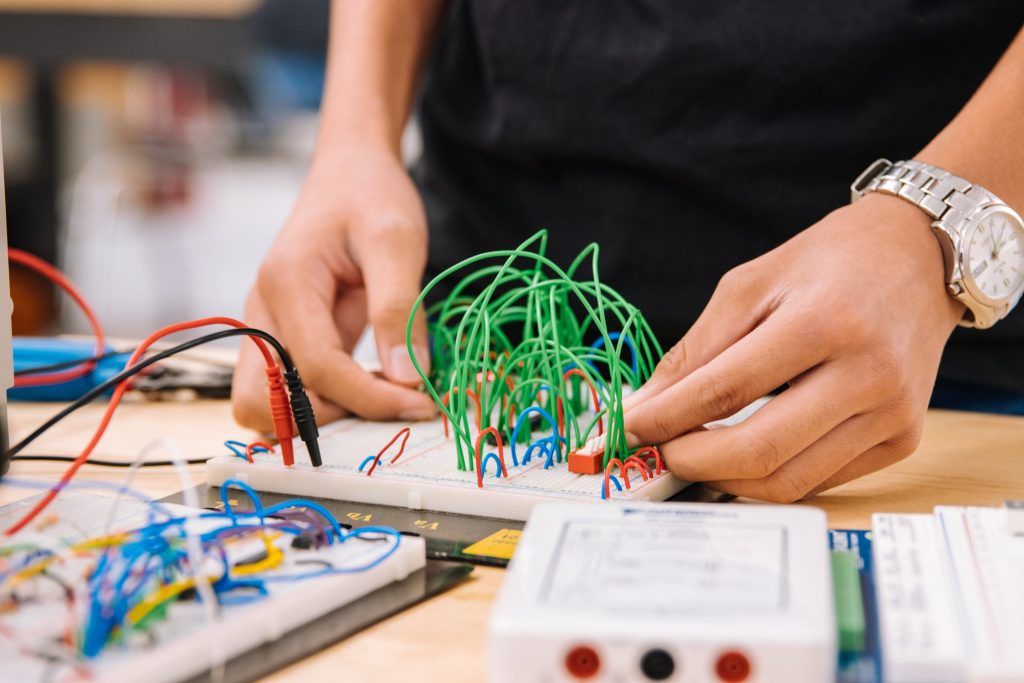As we say farewell to another summer and turn our attention to the new school year, our children may face some learning challenges. In fact, this year is predicted to be harder for most students considering that they spent the past year studying online due to the pandemic. More than just getting back to the routine of waking up early, attending classes, and doing homework, students have to transition from vacation mode to a state of STEM learning and intellectual growth.
A difficult transition period can impact students in many ways. It is very easy to forget previous learning which can result in a decline in grades during the initial months of school’s reopening. Moreover, students who spend most of their summer at home with family, find it hard to be socially active and mingle with a bigger group of friends. Lastly, the shift in schedules from being unstructured to jammed-packed can leave students feeling fatigued, unmotivated, and lacking confidence.
However, interestingly, the use of technology and the study of STEM can help the students transition smoothly from summer to school so that they kick start their new academic year. Here are some suggested ways in which students counteract the summer slide:
1. Redefine Learning
Did you know that an infant begins to grasp technological skills from when they are merely 18 months old? This reminds us that learning doesn’t start at school, it starts as soon as we open our eyes and interact with the world around us.

Most of us associate learning with school buildings and class teachers, but education goes beyond the classroom. Introducing the idea of life-long learning will change a student’s perspective of why they go to school and how important it is in their greater search for knowledge.
2. Enroll in After School Courses

A good way to encourage students to continue learning is by enrolling them in after-school STEM learning courses that teach them empowering skills outside of the school’s syllabus.
School coursework is generally quite light in the first few weeks. It can be a little easier for students to pick up after school courses during this time and get reacquainted with a normal academic workload.
STEM learning sessions can be great options for the holistic development of a student. Aside from the career opportunities that STEM learning opens up, it imparts young learners with the tools to navigate their way through complex life situations.
A STEM education equips students with a toolkit that allows them to contribute towards designing the future. It helps them realize that learning doesn’t stop at school, in fact it is just the beginning to an adventure of limitless knowledge that life has to offer.
3. Encourage Group Activities

Students are likely to have spent a lot of alone time during their summer break. Help them ease into a social setting by introducing them to group activities such as sports, LIVE group classes, community projects, or organized social activities.
Participating in group projects such as online STEM classes can help students further develop their communication and collaboration skills. By learning about the benefits and challenges of working in a team, learners develop an adaptive mindset and experience the productivity, comradery, and satisfaction that comes with completing collaborative projects. Group activities can play an important role in a seamless back-to-school transition.
4. Cultivating Curiosity is Important
Have you ever stopped to consider the steps and processes involved in bringing devices into existence? Ever been curious enough to investigate how things are made? Understanding and defining the problem, coming up with ideas for potential solutions, prototyping, testing and implementing are the basis of design thinking and very much a part of a STEM education.
Let’s take the example of a stapler – the inventor of the stapler used STEM principles to initiate the first design to a final product. They had to consider the number of staples the device can hold and the number of pages it can staple (math), the mechanism for the staple to eject and close, (technology), what the ideal size and shape it would be, and how it would work with gravity to function seamlessly (science) and last but not the least, the physical construction of it (engineering.)
If we can impart the curiosity and innovation of design thinking and in turn, an understanding of how things work, education becomes an exciting life-long learning adventure and not one that starts and ends in a classroom.
5. Transform Fear into Fearlessness
There is a common belief that mathematics, science, and coding can be too challenging for most students to learn. This fear of STEM learning can often make students steer away from those subjects and school altogether. Focusing on a project-based approach to coding and STEM learning that cultivates logical thinking, structured learning, and creative problem-solving can help the student break through the fear.
It also fosters creativity and interactivity that can help overcome the challenges of difficult STEM subjects and concepts. The earlier students start, the more confident and fearless they become.
6. Encourage Effective Use of Technology
Summer break usually means an increase in screen time for kids. Once school begins, they are often left wanting more time on their laptop or tablet. Technology has permeated every aspect of life and whether we like it or not, it keeps evolving and changing. Instead of curbing their technology use when school reopens, why not use screen time as a vehicle for additional learning? As parents, we can choose for our children to be users or creators of our digital future.

STEM classes emphasize learning science, engineering and math because the technology relies so heavily on those subjects. Children studying STEM have a distinct advantage in pursuing careers in highly rewarding technological fields. There is more and more evidence to suggest that encouraging students to enroll in coding lessons at a young age will set them up for a promising future.
SkoolOfCode offers convenient, affordable coding program for middle school students, robotics, science, and math that fit into your student’s busy schedules. The Kids programming courses are designed to encourage creativity while teaching the fundamentals of computer science. We focus on a small group or individual classes that take an interactive project-based approach to learn STEM concepts as well as other important life skills such as problem-solving, presentation, collaboration, and communication. We encourage creativity and curiosity and a structured progressive approach that sets our students up for future success in and out of school. So, why wait and Book a FREE trial class today.

